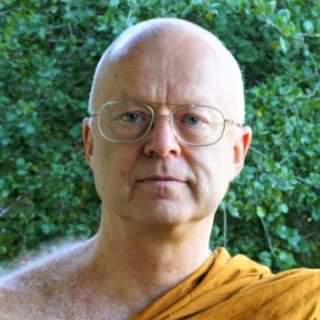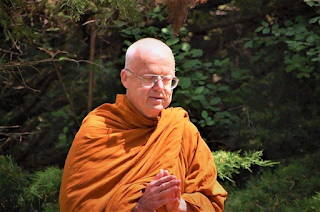THE WAY OF THE LOTUS
Professor W.S. Karunaratne PhD. (Lond)
Courtesy : Indunil Karunaratne & VESAK LIPI
The lotus symbolizes the Buddhist way of life.
It is bom in the depths of the impure mud. It grows through the unclean waters of the pond.
It blossoms forth in all its multi petalled purity and glory on the surface of the pond. In spite of its unclean origin and surrounding its beauty pleases the eye, and its purity chastens the mind and spirit of the onlooker.
Even so the lotus of the individual unfolds itself in the pond of human society. The circumstances of his birth, of procreation and parturition, are impure and unclean. His growth and sustenance, his upbringing and education are associated with suffering and sacrifice, folly and frustration, poverty and privation, disappointment and discouragement, success and failure, gain and loss, fame and disrepute, praise and censure, and happiness and misery.
These are the waters of life, the circumstances of the world. But the perfected being, the "arya sravaka", the true disciple of the Buddha, rises above these worldly waters and shines in all his impeccable purity and perfection.
This is the mission of the Master, the ministry of the Sasana, the purpose of the teaching and the function of the disciple. How do we cultivate the lotus-life?
Human life is two-fold - individual and social.
The individual is as legitimate a part of life as is the mass of society.
Society is the instrument of individual betterment and perfection. Society makes available to us the field for the cultivation of the seeds of the good life. Suffering is both individual and social. Life is indivisible.
So is suffering and happiness. Personal salvation is certainly a contribution to the sum of human happiness, to the alleviation of universal suffering. But it is only a part, an insignificant fraction, of the universal sum.
WISDOM AND KARUNA
We owe a duty both to ourselves and to the world around us. Wisdom or prajna helps us to save ourselves. But it is compassion or Karuna that impels us to save the rest of our fellows.
Wisdom is essential to us to help us understand the world in and around ourselves.
We ought to be able to state our problems accurately before we could seek to solve them.
Objects, events and persons are governed by a causality which wisdom uncovers to our minds. It is causality that connects our past with our present and continues to bind our present to our unmanifested future.
Life is a contiguous chain, an almost perpetual succession of psychophysical states, an almost unending cycle of births and deaths involving pain and suffering.
Our behavior in thought, word and deed is habitually impelled by likes and dislikes which are rooted in ignorance and which are continually determined, governed, influenced and directed by interests. Interests are but ill-concealed manifestations of selfishness sometimes albeit represented as enlightened self-interest. We are strangers to truth and reality as long as we are guided by likes and dislikes. Our actions must be guided by ideas pertaining to truth and error, if we seek to understand the causality that governs our lives.
The chain of life extends into the unmanifested future by means of ever new links forged in the crucible of the triple spring of unwholesome states, that is, avarice or greed, hatred or animosity and confusion or ignorance.
But the strength of the chain depends on the quality of its weakest link. And happily there is a weak link in the chain of life. This is greed and attachment. This is the link that connects two distinct psychological processes in the human mind. The initial process is natural and inevitable, essential to the process of sensory experience.
When stimuli from the external world impinge on the sense organs there is feeling consequent to sensory contact. The psychological process up to this stage is inevitable even in the case of the perfected being.
But the next stage is not inevitable. It is avoidable because theconnecting thread here is greed and grasping.
This is the discovery of the Buddha, the essence of his enlightenment, and the raison d'etre of the teaching of the Dhamma. This then is the content of wisdom, the heart of sambodhi referred in the books of the Buddhists.
Wisdom brings to the individual his happiness and bliss and enables him realise the truth and reality of the universe and attain perfection.
But he has a debt to society. He must need discharge his duties by the world. This is the function of Karuna.
The tree bears fruit for the enjoyment of birds, beasts and men. The perfected being bears his wisdom for the benefit of his society. He lives in the world but is not hampered by it.
He is in the world but not of the world (loke thito lokena anupalitto). The man who seeks to perfect himself and goes out into the world to make others seek perfection for themselves is the bodhisattva. His function is to seek to elevate and to civilise human life at all times and everywhere. The bodhisattva is the true disciple of the Buddha, the preceptor and the exemplar of the life of the lotus.
Karuna makes us look at the world with different eyes. The vision of truth gives us a passion for service to mankind. We begin to recognise that the problems of the individual are causally connected with the problems of the world. We begin to dedicate ourselves to the noblest of all consecrations, namely, service to our fellow men. Our life is a constant pilgrimage to perfection and our sorrows are inextricably bound up with those of our fellows in society.
Inner change in head and heart is primary and necessary for individual perfection. But for social betterment inner change alone is not enough. We must also effect an outer change in our environment in terms of institutions.
There are two basic tendencies at work in the historical process. The first tendency makes us uphold and defend those institutions which are hallowed by age and tradition. But life is in flux and everything in our lives is subject to change. New social contexts make older institutions futile and outmoded. Our temptation to hold fast to established institutions makes us conservatives determined to perpetuate the status quo.
This brings about the second tendency to react to the old order, to call its validity in question and to seek to overthrow it in one way or another.
When these two tendencies come in conflict there is progress and betterment at the end of debate and discussion. This is the dialectics of history as taught by the Buddha in consonance with his dynamic view of social evolution and functional origin of the growth of society.
Change is a simple truth but full of profound possibilities. People change for better or for worse. Karuna gives us the determination and resolve to make every instance of change to manifest itself as a change for the better. The disciple of the Buddha sees in the doctrine of impermanence the fascinating possibilities for individual and social betterment. The conquest of the self leads the disciple to sacrifice his career for the common good of his society and community.
The Buddha is the living embodiment of the Dhamma. The Dhamma is likened to the lotus.
The lotus dominates the symbolism of Buddhist art. The lotus represents the Buddha and his Dhamma at once. The Buddha statue rests on the lotus. The mural paintings in the Buddhist temple depict the lotus.
The lotus is the simile and metaphor par excellence of the poets and writers who sing the praise of the Buddha and his Dhamma, The lotus is the flower par excellence which the devotee places at the feet of the Buddha in paying him homage and obeisance.
INTRODUCING THE WRITER
Professor W.S. Karunaratne PhD. (Lond). F.L Woodward Prize winner of the School of Oriental and African Studies, University of London. Served as Professor of Buddhist Philosophy. University of Ceylon. He passed away in 1986.
Courtesy: BUDDHIST ESSAYS Publisher: Indunil Karunaratne
5 May 2023

















